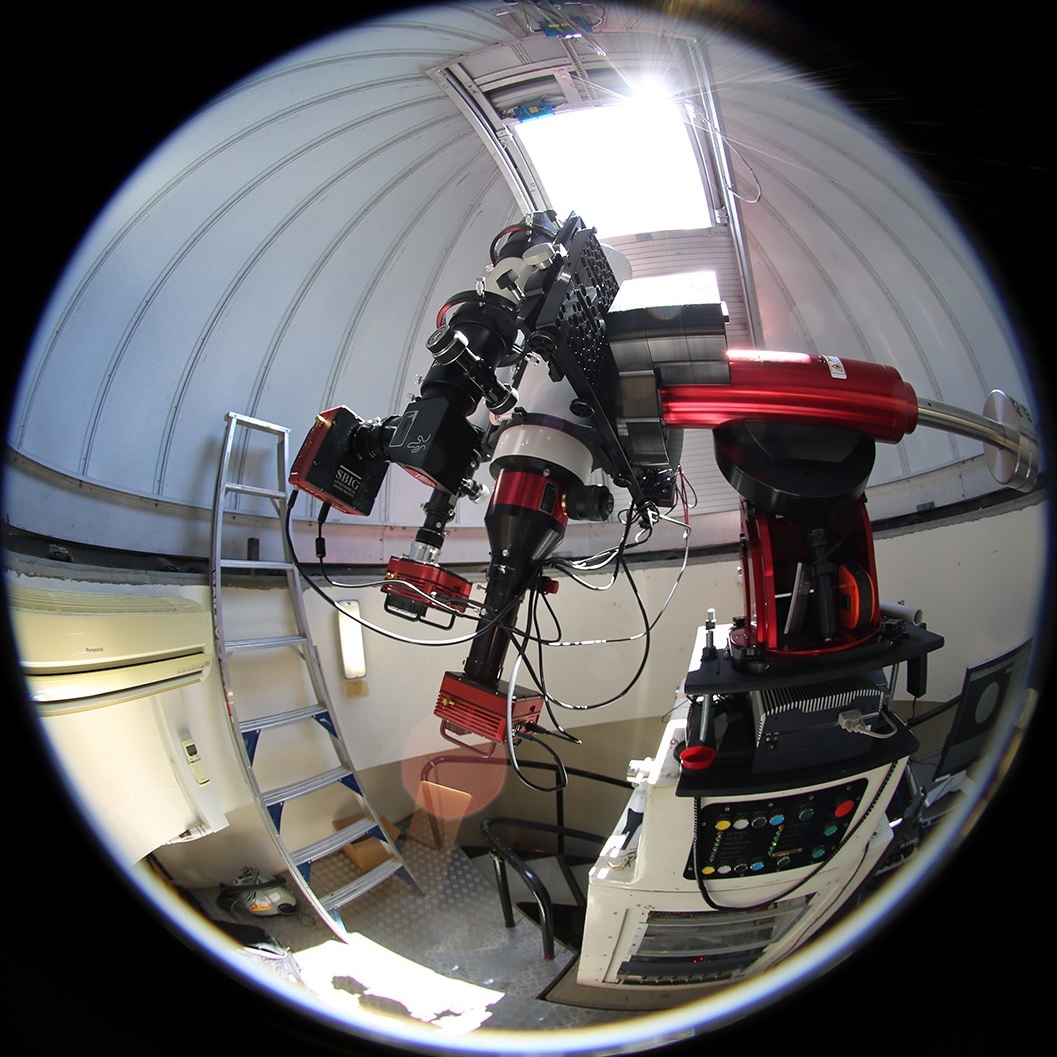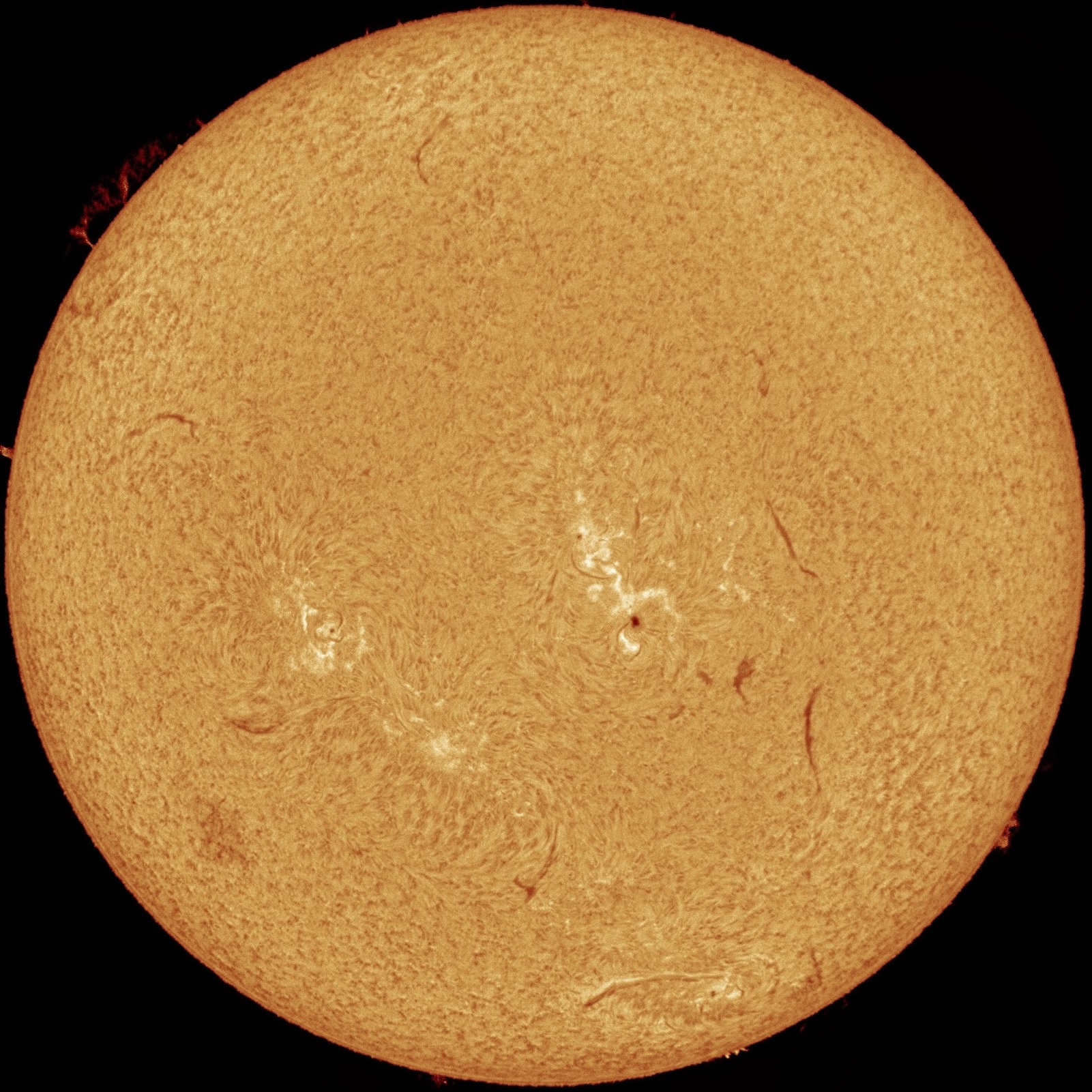SWS Research
The accurate prediction of space weather is one of the great scientific challenges of our age. Space weather is driven by a vast multi-scale system including the Sun, solar wind, magnetosphere, ionosphere and thermosphere. The largest scale sizes encountered in these systems dwarf the scale sizes of the Earth’s ocean-atmosphere system.
The development of accurate empirical, numerical and physics-based models of the solar-terrestrial system will require decades of basic research. The models will need to make accurate predictions despite a paucity of sensors providing measurements to constrain them.
It is important that the academic research community address the space weather challenge: there are a broad range of day-by-day impacts on modern technology, and a solar super storm has the potential to deliver a devastating blow to our technology dependent civilisation.


The new Culgoora multi-channel solar optical telescope assembly(left) and a Hydrogen alpha image recorded on 24 October 2015(right). Photos taken by Mr.Peter Ward.
Research Priorities
The Australian Bureau of Meteorology has limited staff capacity to support space weather research. We are interested in evaluating the performance of new approaches and models aiming to improve the prediction of space weather and its impact on technology:
- Probabilistic predictions of solar flares, Solar Energetic Particle (SEP) events and solar radio bursts.
- Prediction of solar wind conditions including the interplanetary magnetic field variations at Earth, particularly during ICMEs arising from solar active regions or filament eruptions.
- Prediction of geomagnetic and ionospheric storms and their severity.
- Prediction of ionospheric irregularities including equatorial bubbles and TIDs.
- Prediction on GICs throughout the Australian region.
- Prediction of the Aurora Australis.
Contacts
- Dr Richard Marshall, Senior Space Weather Scientist, Space Weather Capability
Please contact via the Space Weather Forecaster.
Ten Recent Publications
Listed below are ten recent publications, with Bureau of Meteorology staff highlighted. More publications can be viewed here.
- Marshall, R.A., Wang, L., Paskos, G. A., Olivares-Pulido, G., Van Der Walt, T., Ong, C., et al. (2019)., Modeling geomagnetically induced currents in Australian power networks using different conductivity models., Space Weather, 17., https://doi.org/10.1029/2018SW002047
- Kumar, V.V., and M.L. Parkinson (2017), A global scale picture of ionospheric peak electron density changes during geomagnetic storms, Space Weather, 15, 637.652, doi:10.1002/2016SW001573
- Marshall, R.A., A. Kelly, T. Van Der Walt, A. Honecker, C. Ong, D. Mikkelsen, A. Spierings, G. Ivanovich, and A. Yoshikawa (2017), Modeling geomagnetic induced currents in Australian power networks, Space Weather, 15, 895.916, doi:10.1002/2017SW001613
- G.A. Steward, V.V. Lobzin, I.H. Cairns, B. Li and D. Neudegg, Automatic recognition of complex magnetic regions on the Sun in SDO magnetogram images and prediction of flares: Techniques and results for the revised flare prediction program Flarecast, Space Weather, 15, 1151.1164, doi:10.1002/2017SW001595
- Saito, S., Sunda, S., Lee, J., Pullen, S., Supriadi, S., Yoshihara, T., Terkildsen, M., Lecat, F. (2017), Ionospheric delay gradient model for GBAS in the Asia-Pacific region, GPS Solutions, 21: 1937, doi:10.1007/s10291-017-0662-1
- Ippolito, A., C. Scotto, D. Sabbagh, V. Sgrigna, and P. Maher (2016), A procedure for the reliability improvement of the oblique ionograms automatic scaling algorithm, Radio Sci., 51, 454.460, doi:10.1002/2015RS005919
- Parkinson, M.L. (2017), The Australian Bureau of Meteorology Space Weather Services, Australian Physics, Volume 54, No 3, pp 90-96, May-Jun 2017
- Neudegg et al. (2017), Severe Space Weather in the Australian Context, Book chapter in "Extreme Events in Geospace: Origins, Predictability, and Consequences", edited by N. Buzulukova (Elsevier)
- Y. Nakamura, K. ShiokawaEmail author, Y. Otsuka, S. Oyama, S. Nozawa, T. Komolmis, S. Komonjida, D. Neudegg, C. Yuile, J. Meriwether, H. Shinagawa and H. Jin (2017), Measurement of thermospheric temperatures using OMTI Fabry-Perot interferometers with 70mm etalon, Earth Planets and Space, 69:57, doi: 10.1186/s40623-017-0643-1
- B. Li, Iver H. Cairns, J. T. Gosling, G. Steward, M. Francis, D. Neudegg, H. Schulte in den Bäumen, P. R. Player, A. R. Milne (2016c), Mapping magnetic field lines between the Sun and Earth, J. Geophys. Res.: Space Physics, Volume 121, Issue 2, pp. 925-948, doi: 10.1002/2015JA021853





